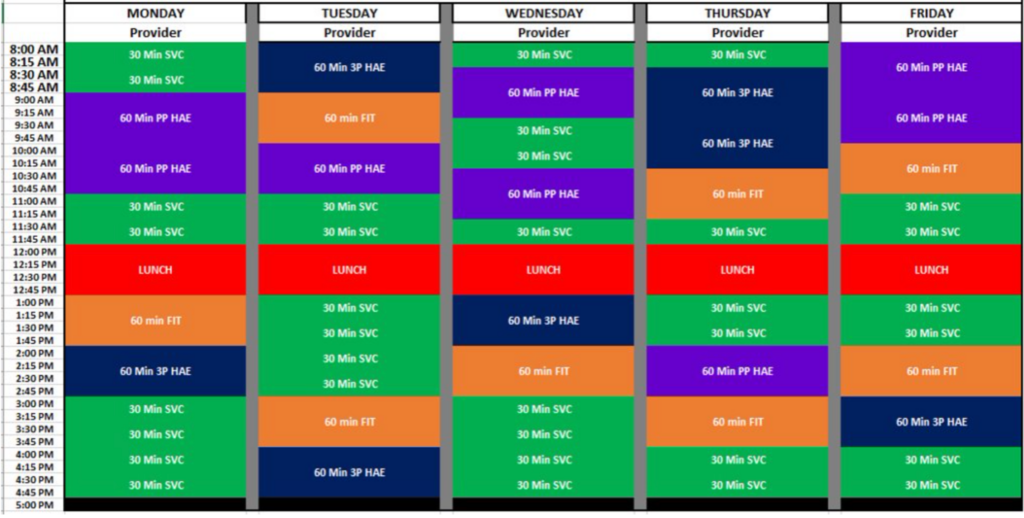
These Key Tips Help Your Patients, Your People & Your Bottom Line
Is your business operating at less than full productivity? Do processes seem inconsistent across providers or locations? Are you missing patient opportunities? It could be operational inefficiencies, which can mean reduced productivity, teamwork, patient satisfaction, and revenue.
You don’t necessarily need to overhaul your business, though — it could be a simple matter of fine-tuning your processes or introducing minor but impactful changes. The following five steps offer a solid starting place for boosting your efficiency.

1. Develop a Strategic Plan
Operating your best starts with having a strategic plan aligned with your business goals and priorities. This gives your team clear direction on how the business defines success as well as the parameters for getting there.
Your strategic plan should include:
- Key objections and initiatives
- Goal-specific milestones
- A cultural plan
- A marketing plan
- An annual budget
- 3- to 5-year financial forecasts
Keep the number of initiatives to what can reasonably be accomplished in a year. Also, delegate team members as captains responsible for certain aspects of the plan — a move that can also support their individual professional goals.

2. Assess Your Industry
Are you familiar with the SWOT (strengths, weaknesses, opportunities, threats) analysis? As preparation for strategic planning, a SWOT analysis helps you assess external forces shaping your industry, giving insight into the competitive and regulatory landscape and identifying market trends.
If data isn’t already available, conduct an efficient external assessment before the strategic-planning process to gain information that can help inform decisions and test assumptions. This results in more targeted conversations during strategic planning.
In conjunction with an external-market assessment, the internal organizational review grounds the business strategy and sets a baseline for the organization’s culture and capabilities. Together, the internal and external review allow you to stay nimble in an ever-changing market.

3. Formalize Your Processes
Do you maintain clear, documented processes? Identifying them, making sure everyone’s aware of them, and putting them into action are critical. Process helps:
- Patient experience by ensuring consistently high standards of care for every patient regardless of time, provider, or location
- Employee experience by reinforcing company culture, expectations, standards, and accountability in support of your brand
- Scaling and duplicability by fostering consistency to drive results and provides the blueprint for future expansion
An operations handbook demonstrates formalization of your processes through the create-adopt-adhere model. The handbook itself represents the creation step; followed by communication, training, and coaching, which reflect adoption; and then expectations of accountability, or adherence.

4. Optimize Your Scheduling
If time is one of the most valuable commodities, it stands to reason that scheduling can make or break a business. Whether paperwork rather than revenue-generating activities dominates the workweek or the team struggles to fit in priority tasks, poor scheduling can torpedo your mission and the bottom line.
The solution for some is block scheduling, in which each day is divided into blocks, with each block in turn reserved for a specific type of activity — hearing aid evaluations, for example. Guided by your clinic’s goals, you organize the blocks to prioritize revenue-generating activities and other key needs.
Though a proven practice that gets results, block scheduling isn’t necessarily for every clinic. Knowing what an optimized schedule looks like for your business begins with understanding your core goals and assessing elements such as:
- Staffing resources
- Revenue- and nonrevenue-generating activities
- Trigger points when additional staffing (audiology tech, for example) may be needed
Real-life optimized schedule for an audiologist in an ENT practice.


5. Track Your Metrics
What’s possible for your business, and how will you achieve it? Knowing the answers makes it a lot easier to attain your goals, track critical progress and improvement opportunities, and suss out inefficiencies that bog down your business.
Metrics help give you a full picture of how your business is progressing in your annual plan. Organizing your metrics according to the three pillars of process — culture, operations, and finance — provides you with a helpful lens through which to view your business. It also makes review and discussion of metrics more manageable.
Culture
Your cultural pillar comprises those things that drive the people side of your business, such as team meetings, compensation plans, and captainships. The associated metrics are:
- Goal alignment
- Engagement surveys
- Exit interviews
Operations
Your operational pillar comprises those things that drive the mission of your business, such as scheduling optimization, patient and physician outreach, and process documentation. The associated metrics are:
- Effectiveness ratio
- Inbound-call conversion
- Opportunities
- Returns
- Attrition rate
- Scheduling efficiency
Finance
Your financial pillar comprises those things that set your business up for continued monetary success, such as cash-flow forecasting and reconciling accounts. The associated metrics are:
- Average selling price
- Cash flow
- Budget
- Forecast
- Working capital
- Practice breakeven
- Operating expenses